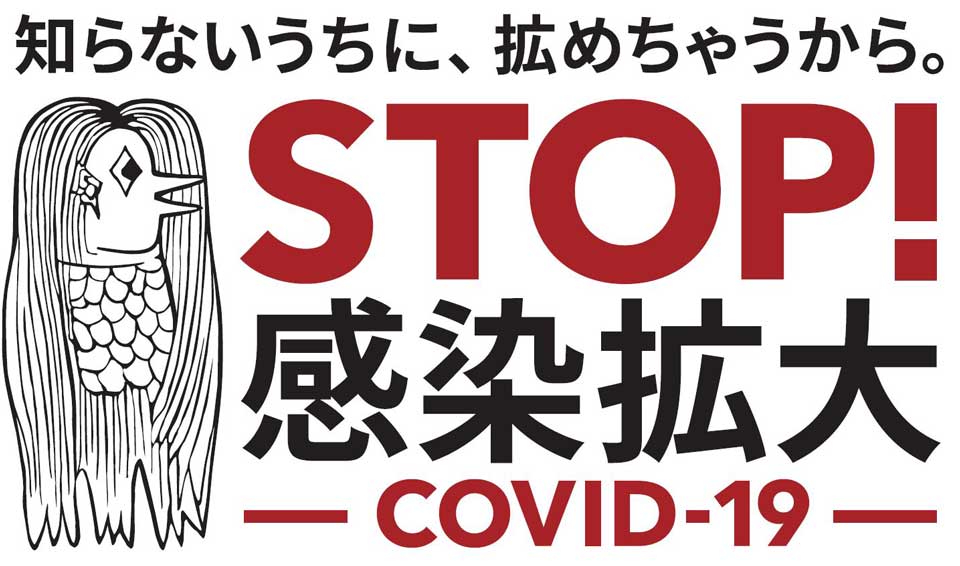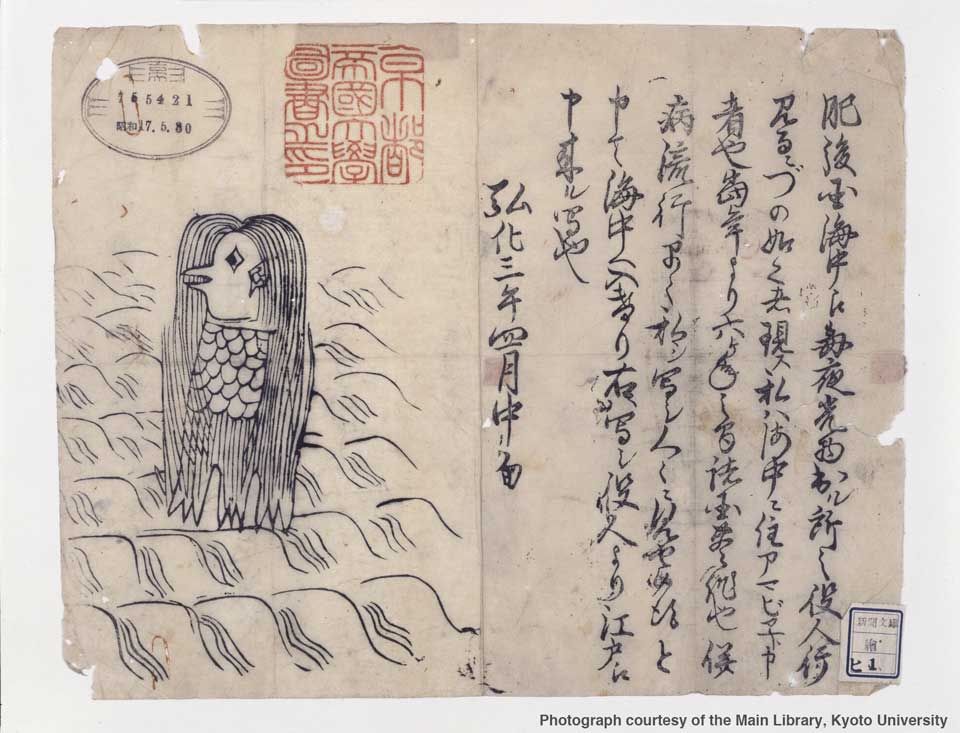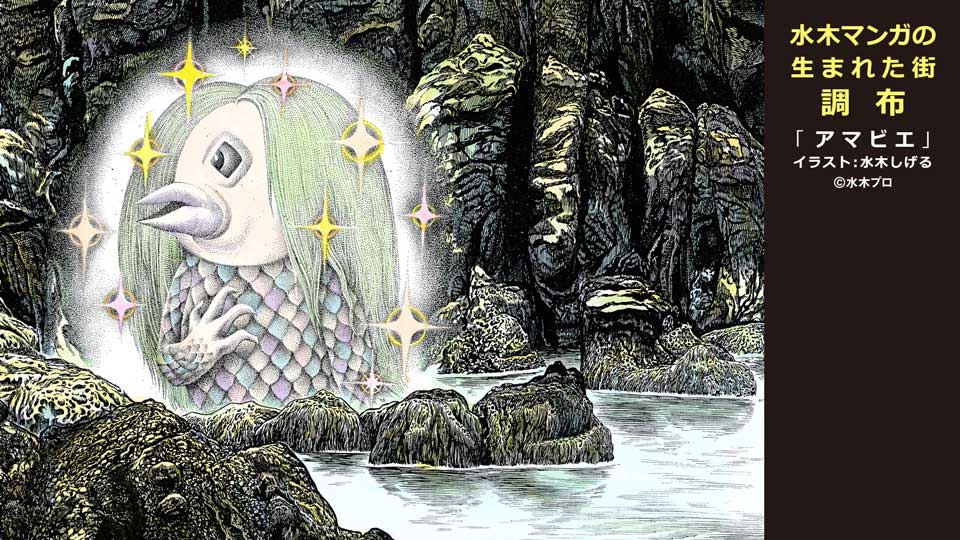Back from the 19th century
The mermaid-like creature began appearing on social media in Japan in early March and was soon being tagged in upwards of 30,000 posts a day. Manga artists rendered the creature in their own styles, sharing images alongside messages wishing for an end to the virus.
Amabie then got official recognition when Japan's health ministry made it the face of its public safety campaign. After that, it started appearing on cookies, face masks, candy, bread rolls, the obligatory Starbucks logo pastiche, and even statues in parks.

According to a woodblock-printed news sheet dated April 1846, the creature made its first and only appearance in the sea off Higo Province, now Kumamoto Prefecture, on the southern island of Kyushu. As the story goes, a government official went down to the beach to investigate reports of something shining in the water. When the official arrived, a mermaid-like creature emerged, introduced itself as "Amabie who lives in the sea," and issued two predictions. "For the next six years, there will be a bountiful harvest across Japan, but there will also be an epidemic." Amabie then told the official, "Quickly draw a picture of me and show it to people," and disappeared back into the sea.

Evolution of Amabie
Nagano Eishun, librarian of the Fukui Prefectural Archives and an expert on ancient spirits, says Amabie is one of more than a dozen prophecy beasts reported during the Edo period, and it probably derives from an ape-like creature with a similar name.
In 1843, three years before Amabie first appeared, there were reports of a three-legged simian in the same province. The furry beast went by the name Amabiko and its origin story was strikingly similar. A woodblock printed news sheet from the era said a man went down to the sea to investigate reports of glowing lights. Amabiko introduced itself, predicted a rich harvest and an epidemic, then claimed that people would survive and live long, healthy lives if they saw the creature's image.

"The two have so much in common, it's natural to think that Amabiko was Amabie's former self," says Nagano. And he says the monkey was far more famous than the mer-creature in the 19th century. During times of plagues, such as cholera and dysentery, people used a picture of Amabiko as a good luck charm.
Nagano says the creature probably changed form as its story spread across the country through drawings and people took liberties with their interpretations. He adds that commercial interests may have driven both the creativity and the creature’s insistence that it had to be seen.
"The woodblock printed news sheet, called kawaraban, was basically a single sheet of paper with a piece of illustrated news or gossip," he says. "The producers always wanted an interesting story to catch people’s attention, so they got inventive, like perhaps letting a spirit warn people they’d get sick unless everyone had a copy of that image."

Public-spirited
After many decades out of the spotlight, Amabie is finally getting the attention it craves with some help from social media.
It seems human nature hasn’t changed much since the 19th century, and the image of this strange creature is still able to provide some kind of solace. But Nagano says there’s a fundamental difference between then and now.
"Back in the 19th century, those images were only supposed to save the person who bought the news sheet. But now people are spreading the images to protect everyone. I would say that shows we’ve made big progress."


